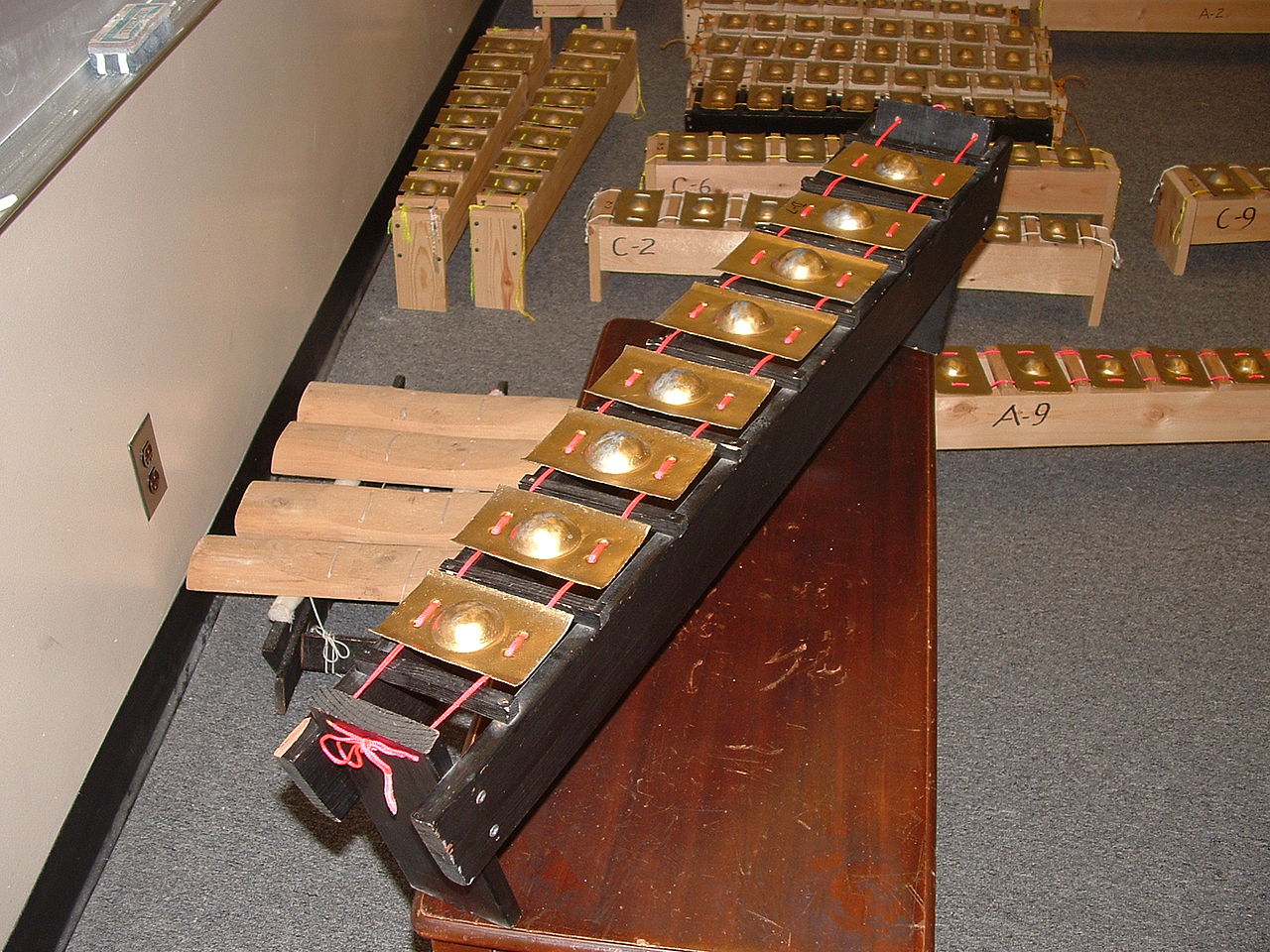Kulintang a Tiniok – A Type of Philippine Metallophone

In the vast tapestry of Filipino culture, one can find a rich diversity of art forms, and music plays a central role in this heritage. Among the many traditional instruments in the Philippines, the Kulintang a tiniok stands out as a unique and vital part of the country’s musical traditions, particularly among the indigenous groups of Mindanao.
What is Kulintang a tiniok?
The kulintang a tiniok is a type of Philippine metallophone with eight tuned knobbed metal plates strung together via string a top a wooden antangan or rack. Kulintang a tiniok is a Maguindanaon term meaning “kulintang with string,” but they also could call them kulintang a putao, meaning “kulintang of metal.” The Maranao refer to this instrument as a sarunay or salunay, salonay, saronay, saronai or sarunai.
The Cultural Significance of Kulintang a tiniok
The Kulintang a tiniok is more than just a musical instrument; it carries deep cultural and spiritual significance for the communities that use it. In many ways, it embodies the soul of the people, often played during important rituals, celebrations, and ceremonies. This includes events such as weddings, harvest celebrations, religious rites, and festivals.
For many Filipino indigenous groups, the kulintang is associated with a rich tradition of oral history, storytelling, and spiritual communication. It is believed that the sound of the gongs has the power to connect the physical and spiritual worlds, and during rituals, the music serves as a conduit to communicate with ancestors and deities.
One particularly notable feature of the Kulintang a tiniok is its use in courtship rituals, where the music is played to convey emotions and messages from the heart. The melodies, intricately woven through the gongs, can express a wide range of feelings, from joy to longing, and they often play a part in personal expressions of love.
The Role of Kulintang in Filipino Society Today
In modern times, the Kulintang a tiniok has continued to hold a special place in the hearts of Filipinos, especially those from Mindanao. Despite the growing influence of modern music genres, the tradition of playing the kulintang has been preserved through dedicated cultural custodians and music enthusiasts. Schools, cultural centers, and local organizations continue to teach young people the art of playing this traditional instrument, ensuring its survival and relevance in the present day.
Learning and Playing the Kulintang a tiniok
Learning to play the Kulintang a tiniok is both a spiritual and physical practice. It requires precision, rhythm, and a deep understanding of the cultural context of the music. Traditionally, the playing techniques are passed down from generation to generation, with elders teaching younger members of the community.
The playing technique is delicate; musicians use soft mallets to strike the gongs and produce a melodic, almost hypnotic sound. It is a skill that involves both mastery of rhythm and the ability to improvise, as the music is often fluid and expressive.
The Kulintang a tiniok is more than just an instrument
It is a living tradition, a symbol of the richness of Filipino culture, and an expression of the people’s connection to their ancestors and to the spiritual world. Its melodic tones are a bridge between the past and the present, and its place in Filipino society reflects the enduring importance of preserving and celebrating cultural heritage.
As the world becomes more interconnected, the Kulintang a tiniok continues to be a vital part of the Filipino identity. Its sounds are not just music, they are a celebration of life, tradition, and the strength of the Filipino spirit.
References:
https://en.wikipedia.org/wiki/Kulintang_a_tiniok










